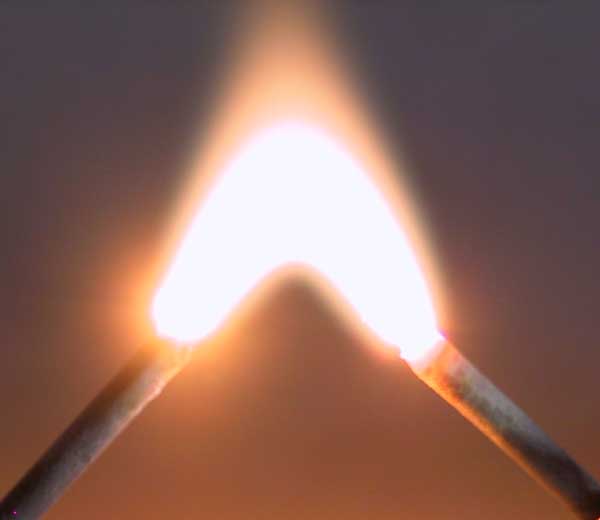|
2011 Southwest Blackout
The 2011 Southwest blackout, also known as the Great Blackout of 2011, was a widespread power outage that affected the San Diego–Tijuana area, southern Orange County, Imperial Valley, Mexicali Valley, Coachella Valley, and parts of Arizona. It occurred on Thursday, September 8, 2011, beginning at about 3:38pm PDT, and was the largest power failure in California history. Background At the time of the 2011 blackout, three separate, Series and parallel circuits, parallel transmission pathways connected Southern California to generating stations in Arizona. Excess power was then sold on to Baja California, which had disabled 600 MW worth of generation equipment for maintenance. The Southwest Power Link, a single Electrical Circuit, circuit 500 kV transmission line, connected San Diego Gas & Electric (SDG&E, a subsidiary of Sempra Energy) to the Arizona Public Service (APS) system via the Gila River Valley, North Gila substation near Yuma, AZThe next yea ... [...More Info...] [...Related Items...] OR: [Wikipedia] [Google] [Baidu] |
San Onofre Nuclear Generating Station
The San Onofre Nuclear Generating Station (SONGS) is a permanently closed nuclear power plant located south of San Clemente, California, on the Pacific coast, in Nuclear Regulatory Commission Region IV. The plant was shut down in 2013 after defects were found in replacement steam generators; it is currently in the process of being decommissioned. The 2.2 GW of electricity supply lost when the plant shut down was replaced with 1.8 GW from new natural-gas-fired power plants and 250 MW from energy-storage projects. The plant is owned by Southern California Edison (SCE). Edison International, parent of SCE, holds 78.2% ownership in the plant; San Diego Gas & Electric, 20%; and the City of Riverside Utilities Department, 1.8%. When fully functional, it employed over 2,200 people. Located between the Pacific Ocean and the Surf Line, the station is a prominent landmark because of its twin hemispherical containment buildings, which were designed to contain any fission product ... [...More Info...] [...Related Items...] OR: [Wikipedia] [Google] [Baidu] |
Electric Arc
An electric arc (or arc discharge) is an electrical breakdown of a gas that produces a prolonged electrical discharge. The electric current, current through a normally Electrical conductance, nonconductive medium such as air produces a plasma (physics), plasma, which may produce visible light. An arc discharge is initiated either by thermionic emission or by field emission. After initiation, the arc relies on thermionic emission of electrons from the electrodes supporting the arc. An arc discharge is characterized by a lower voltage than a glow discharge. An archaic term is voltaic arc, as used in the phrase "voltaic arc lamp". Techniques for arc suppression can be used to reduce the duration or likelihood of arc formation. In the late 19th century, Arc lamp, electric arc lighting was in wide use for Street light#Arc lamps, public lighting. Some low-pressure electric arcs are used in many applications. For example, fluorescent lamp, fluorescent tubes, mercury, sodium, and met ... [...More Info...] [...Related Items...] OR: [Wikipedia] [Google] [Baidu] |
Associated Press
The Associated Press (AP) is an American not-for-profit organization, not-for-profit news agency headquartered in New York City. Founded in 1846, it operates as a cooperative, unincorporated association, and produces news reports that are distributed to its members, major U.S. daily newspapers and radio and television broadcasters. Since the award was established in 1917, the AP has earned 59 Pulitzer Prizes, including 36 for photography. The AP is also known for its widely used ''AP Stylebook'', its AP polls tracking National Collegiate Athletic Association, NCAA sports, sponsoring the National Football League's annual awards, and its election polls and results during Elections in the United States, US elections. By 2016, news collected by the AP was published and republished by more than 1,300 newspapers and broadcasters. The AP operates 235 news bureaus in 94 countries, and publishes in English, Spanish, and Arabic. It also operates the AP Radio Network, which provides twice ... [...More Info...] [...Related Items...] OR: [Wikipedia] [Google] [Baidu] |
Transformer
In electrical engineering, a transformer is a passive component that transfers electrical energy from one electrical circuit to another circuit, or multiple Electrical network, circuits. A varying current in any coil of the transformer produces a varying magnetic flux in the transformer's core, which induces a varying electromotive force, electromotive force (EMF) across any other coils wound around the same core. Electrical energy can be transferred between separate coils without a metallic (conductive) connection between the two circuits. Faraday's law of induction, discovered in 1831, describes the induced voltage effect in any coil due to a changing magnetic flux encircled by the coil. Transformers are used to change Alternating current, AC voltage levels, such transformers being termed step-up or step-down type to increase or decrease voltage level, respectively. Transformers can also be used to provide galvanic isolation between circuits as well as to couple stages of signa ... [...More Info...] [...Related Items...] OR: [Wikipedia] [Google] [Baidu] |
N-1 Criterion
In an electrical grid, contingency is an unexpected failure of a single principal component (e.g., an electrical generator or a power transmission line) that causes the change of the system state large enough to endanger the grid security. Some protective relays are set up in a way that multiple individual components are disconnected due to a single fault, in this case, taking out all the units in a group counts as a single contingency. A scheduled outage (like maintenance) is not a contingency. The choice of term emphasizes the fact that a single fault can cause severe damage to the system so quickly that the operator will not have time to intervene, and therefore a reaction to every single fault has to be defensively pre-built into the system configuration. Some sources use the term interchangeably with "disturbance" and "fault". Contingency analysis The contingency analysis application periodically runs on the computers at the operations centers providing suggestions to the ... [...More Info...] [...Related Items...] OR: [Wikipedia] [Google] [Baidu] |
Comisión Federal De Electricidad
The Comisión Federal de Electricidad () is the Government-owned company, state-owned electric utility of Mexico, widely known as CFE. The Mexican Constitution of Mexico, constitution states that the government is responsible for the control and development of the national electric industry, and CFE carries out this mission. The company's slogan is "Una empresa de clase mundial" ("A World-Class Company"). Affiliations CFE is not a part of the North American Electric Reliability Corporation, though its transmission system in northern Baja California is part of the Western Electricity Coordinating Council through its interconnection with San Diego Gas & Electric via the Miguel-Tijuana and the LaRosita-Imperial Valley Lines and the Path 45 corridor; it also has a few other interconnections across the border with local utilities in the United States. On August 2, 2019, the federal government announced it will provide Internet access throughout the country through the establishment of ... [...More Info...] [...Related Items...] OR: [Wikipedia] [Google] [Baidu] |
Hoover Dam
The Hoover Dam is a concrete arch-gravity dam in the Black Canyon of the Colorado, Black Canyon of the Colorado River (U.S.), Colorado River, on the border between the U.S. states of Nevada and Arizona. Constructed between 1931 and 1936, during the Great Depression in the United States, Great Depression, it was dedicated on September 30, 1935, by President Franklin D. Roosevelt. Its construction was the result of a massive effort involving thousands of workers, and cost over 100 lives. Bills passed by Congress during its construction referred to it as Hoover Dam (after President Herbert Hoover), but the Roosevelt administration named it Boulder Dam. In 1947, United States Congress, Congress restored the name Hoover Dam. Since about 1900, the Black Canyon and nearby Boulder Canyon (Colorado River), Boulder Canyon had been investigated for their potential to support a dam that would control floods, provide irrigation water, and produce hydroelectric power. In 1928, Congress a ... [...More Info...] [...Related Items...] OR: [Wikipedia] [Google] [Baidu] |
Western Area Power Administration
As one of the four power marketing administrations within the U.S. Department of Energy, the Western Area Power Administration (WAPA)'s role is to market wholesale hydropower generated at 57 hydroelectric federal dams operated by the Bureau of Reclamation, United States Army Corps of Engineers and the International Boundary and Water Commission. WAPA delivers this power through a more than 17,000-circuit-mile, high-voltage power transmission system to more than 700 preference power customers across the West. Those customers, in turn, provide retail electric service to more than 40 million consumers. WAPA is headquartered in the Denver, Colorado suburb of Lakewood, Colorado. WAPA’s service territory spans 15 central and western states, including Arizona, California, Colorado, Iowa, Kansas, Minnesota, Montana, Nebraska, Nevada, New Mexico, North Dakota, South Dakota, Texas, Utah, and Wyoming. History WAPA was created in Section 302 of the Department of Energy Organization Act ... [...More Info...] [...Related Items...] OR: [Wikipedia] [Google] [Baidu] |
Imperial Irrigation District
The Imperial Irrigation District (IID) is an irrigation district that serves the Imperial Valley and a large portion of the eastern and southern Coachella Valley in the Colorado Desert region of Southern California. Established under the State Water Code, the IID supplies roughly of Imperial Valley farmland with raw Colorado River water to support irrigation. IID also supplies electrical energy to the Imperial and Coachella valleys. IID was formed in 1911 under the California Irrigation District Act to acquire the properties of the bankrupt California Development Company and its Mexican subsidiary. The IID was formed as a public agency, acquiring 13 mutual water companies in the valley which had developed and operated water distribution canals. The district is headquartered in Imperial, California. The IID is a key partner in the Quantification Settlement Agreement—a pack of several agreements among California water districts entered into in 2003 to help California live ... [...More Info...] [...Related Items...] OR: [Wikipedia] [Google] [Baidu] |
California Independent System Operator
The California Independent System Operator (CAISO) is a non-profit Independent System Operator (ISO) serving California. It oversees the operation of California's bulk electric power system, transmission lines, and electricity market generated and transmitted by its member utilities. CAISO is one of the largest ISOs in the world, delivering 300 million megawatt-hours of electricity each year and managing about 80% of California's electric flow. History The California Legislature created CAISO in 1998 as part of the state restructuring of electricity markets. The legislature was responding to Federal Energy Regulatory Commission (FERC) recommendations following the passage of the federal Energy Policy Act of 1992, which removed barriers to competition in the wholesale generation of electricity business. FERC regulates CAISO because interstate transmission lines fall under the jurisdiction of federal commerce laws. Management CAISO's leadership consists of executive managem ... [...More Info...] [...Related Items...] OR: [Wikipedia] [Google] [Baidu] |
Western Electricity Coordinating Council
The Western Electricity Coordinating Council (WECC) oversees Bulk Electric System (BES) reliability for the entire Western Interconnection system in North America. WECC is the regional entity responsible for managing for coordinating planning and operations, connecting generators and loads across an area of nearly . In addition, WECC provides an environment for the development of Reliability Standards and the coordination of the operating and planning activities of its members as set forth in the WECC Bylaws. WECC is geographically the largest and most diverse of the six Regional Entities with delegated authority from the North American Electric Reliability Corporation, North American Electric Reliability Corporation (NERC) and Federal Energy Regulatory Commission (FERC). The WECC Region extends from Canada to Mexico and includes the provinces of Alberta and British Columbia, the northern portion of Baja California, Mexico, and all or portions of the 14 Western states between. M ... [...More Info...] [...Related Items...] OR: [Wikipedia] [Google] [Baidu] |





